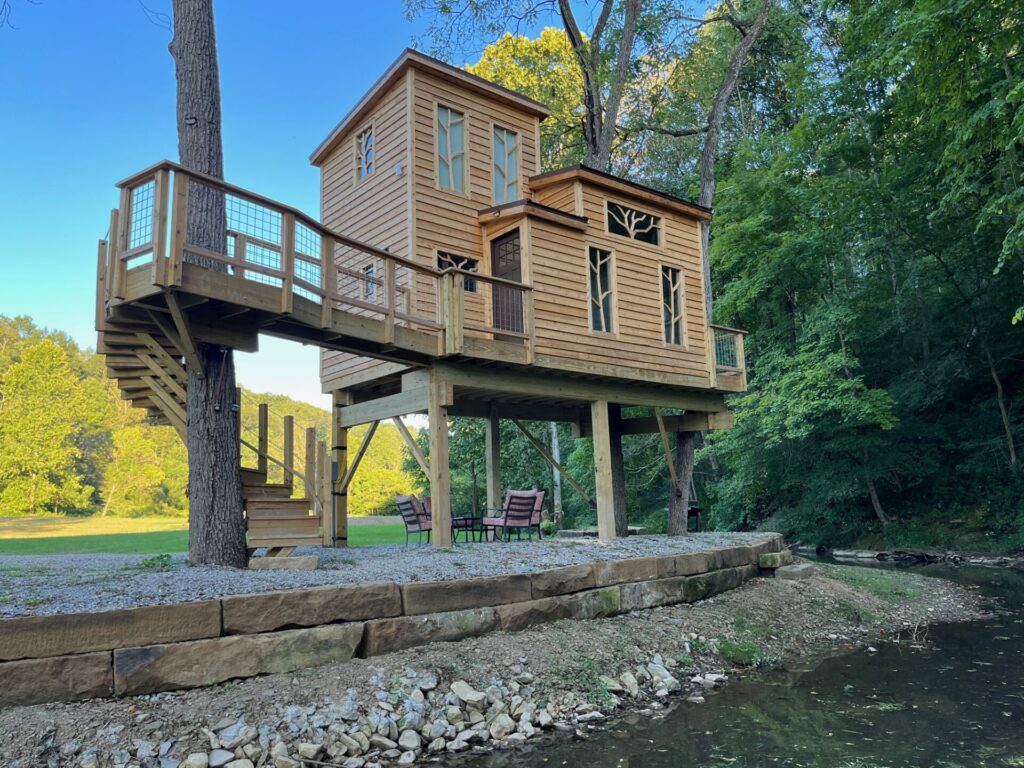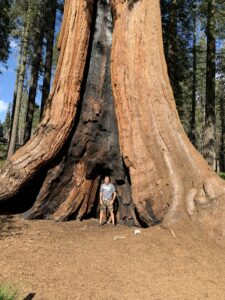
It has always been on my bucket list to visit some of the larger, well-known National Parks in the country such as Yosemite, Yellowstone and Sequoia. In June, 2019 I was able to check one of those off my list. Sequoia National Park, located in Tulare County, California, was established in 1890. The second oldest national park in the United States, it welcomes more than a million visitors each year.
It is adjacent to Kings Canyon National Park in the southern Sierra Nevada mountains. Elevations in this area range from 1,370 feet to an astonishing 14,494 feet.

The main attraction of the park is, of course, the Sequoia trees. The Sequoia tree was named after the Cherokee Chief Sequoya. Chief Sequoya was a silversmith, a U.S. Army soldier, and the inventor of the Cherokee written language.
The giant Sequoia found in Sequoia and Kings Canyon is also called the “Sierra Redwood” and the “Big Tree.” It has a column-like trunk with stout branches and reddish-brown bark.

Ideal growing conditions of mild, wet winters and dry, warm summers make it one of the fastest-growing trees, reaching 270 feet or more in height.
The thick bark of the Sequoia is the tree’s main defense against bugs and bacteria, and it is virtually impervious to brush fires. Giant Sequoias grow naturally on the west slope of the Sierra Nevada.
Of the world’s 37 largest Sequoia trees, 20 are giant sequoias growing in Sequoia and Kings Canyon. The General Sherman Tree is the world’s largest living thing, at over 2,000 years. While there are taller and wider trees in existence, the overall size and volume makes the General Sherman the winner.
The Tunnel Log also receives many visitors. It came into existence after a giant sequoia fell across Crescent Meadow Road, a result of natural causes. A tunnel was cut through the fallen log. Visitors can drive through the tunnel log but taller vehicles must take a bypass. Sequoia is also home to Mt. Whitney, the highest mountain in the U.S., outside of Alaska.
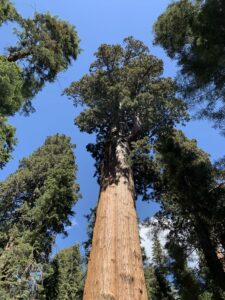
It is always recommended that you check weather conditions before your visit, as mountain weather can change quickly. Campgrounds and overnight backpacking are available but wilderness permits are required to stay outside of designated campgrounds.
Several trails and campsites offer wheelchair accessibility. General park maps, interactive online maps and regional maps are available so you can virtually plan your entire visit before you arrive.
After purchasing a vehicle pass, which is good for 1-7 days for all occupants of the vehicle, we traveled up winding roads on the Generals Highway for over an hour to a parking area near the Crystal Cave.
Tours of the cave are managed by Sequoia Parks Conservancy. Schedules and ticket information are available on line, and all tours must be scheduled and tickets purchased on line as there are no tickets sold at the cave entrance.
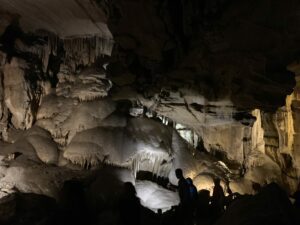
A 15-minute hike to the cave entrance and a park ranger/tour guide reviewed what we should expect. He related that the cave was discovered in the 1950’s by a group of people fishing by a stream when they felt cold air blowing on them.
They followed the cold air and discovered the cave, which was later determined to be about 70 miles long. Before entering we were instructed to stand on a mat to clean our shoes of debris which could be poisonous to cave life, and not to touch the walls. Although the temperature in the city was 100 degrees, the temperature in the cave was 50 degrees and a light jacket was welcome.
Two lighted, man-made paths gave us a choice of a 2½-hour tour or a short 60-minute tour. There is no natural light in the cave and it is home to numerous bats. Narrow openings and stones on the path demand strict attention to footing.
Beautiful colors line the stone walls, as well as the stalactites and stalagmites from above and below. The cave was originally formed by the flow of water, and when the water receded, the cave was left. Continuous streams of rushing water cause the cave to grow larger each year.
It is not recommended to bring food into the park due to the threat of bears; however, food trucks are available to obtain drinks, snacks and meals. Shuttle buses move throughout the park all day long, stopping at all areas.
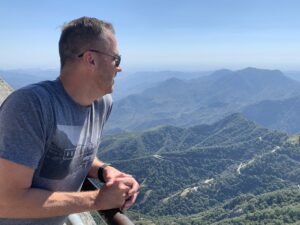
Once you are on the bus, you can get off at any area to explore and hike one of the many paths. Some of the paths are narrow with a steep dropoff at the edge. For that reason, visitors are advised to only hike the paths if they feel they are physically fit and not afraid of heights.
We took the shuttle to the Big Sequoia area, the home of Sherman, the oldest tree in the region but not the largest. Sherman’s bark is a beautiful red color and the girth has been measured by a group of 50 people holding hands to surround the base of the tree.
Boarding the shuttle again, we moved on to Moro Rock, a granite dome formation in the center of the park. We climbed the stairway for about a half hour to reach the top for an exceptional view of snow-capped mountains.
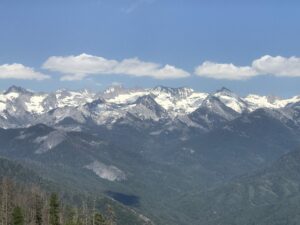
The stairway was constructed in the 1930’s and ends at an elevation of 6,725 feet. It is very narrow and since it accommodates visitors going both up and down, at times people are required to move to the side to let others pass. After a relaxing rest at the top and enough photos to fill an album, we started our descent.
Over the course of the day we had heard that many of the resident bears, especially mothers and cubs, could be found at sundown feeding and playing in an area called Crescent Meadow. So, of course, we boarded the shuttle and that was our next destination.

Although the area was beautiful, there were no bears to be seen on the day of our visit. After waiting patiently for about an hour, we had to leave. While the shuttles travel continuously throughout the park during the day, their service ends at dusk. Therefore, missing the last shuttle would have meant about a 4-hour hike back to our vehicle.
Although we saw numerous deer and evidence of bear in many areas, we never actually sited any bears in the park.
Part of the Compass Ohio team, Dale Bonebrake, described his take on our day as follows: “If you are looking for an escape or to become one with nature, I would definitely suggest exploring Sequoia National Park. I was in awe of the beauty and size of the majestic redwood trees. We certainly walked many miles exploring the caves and trails, but it was well worth our tired feet at the end of the day.”

Bus tours are available if your choice is to explore the park in comfort. Drivers and guides share information and history as you visit the essential sightseeing areas of Sequoia. You can also explore the park on horseback at your own pace.
Besides camping and cabins, there are numerous lodges in the area to extend your stay for several days. Back at the park entrance, there is a gift shop with numerous replicas of the sights to remember your visit.
Every now and then I look back through my photos and remember the smell of the redwood trees in the park. A trip through Sequoia National Park is truly an unforgettable experience, and one I highly recommend.
Sequoia National Park




